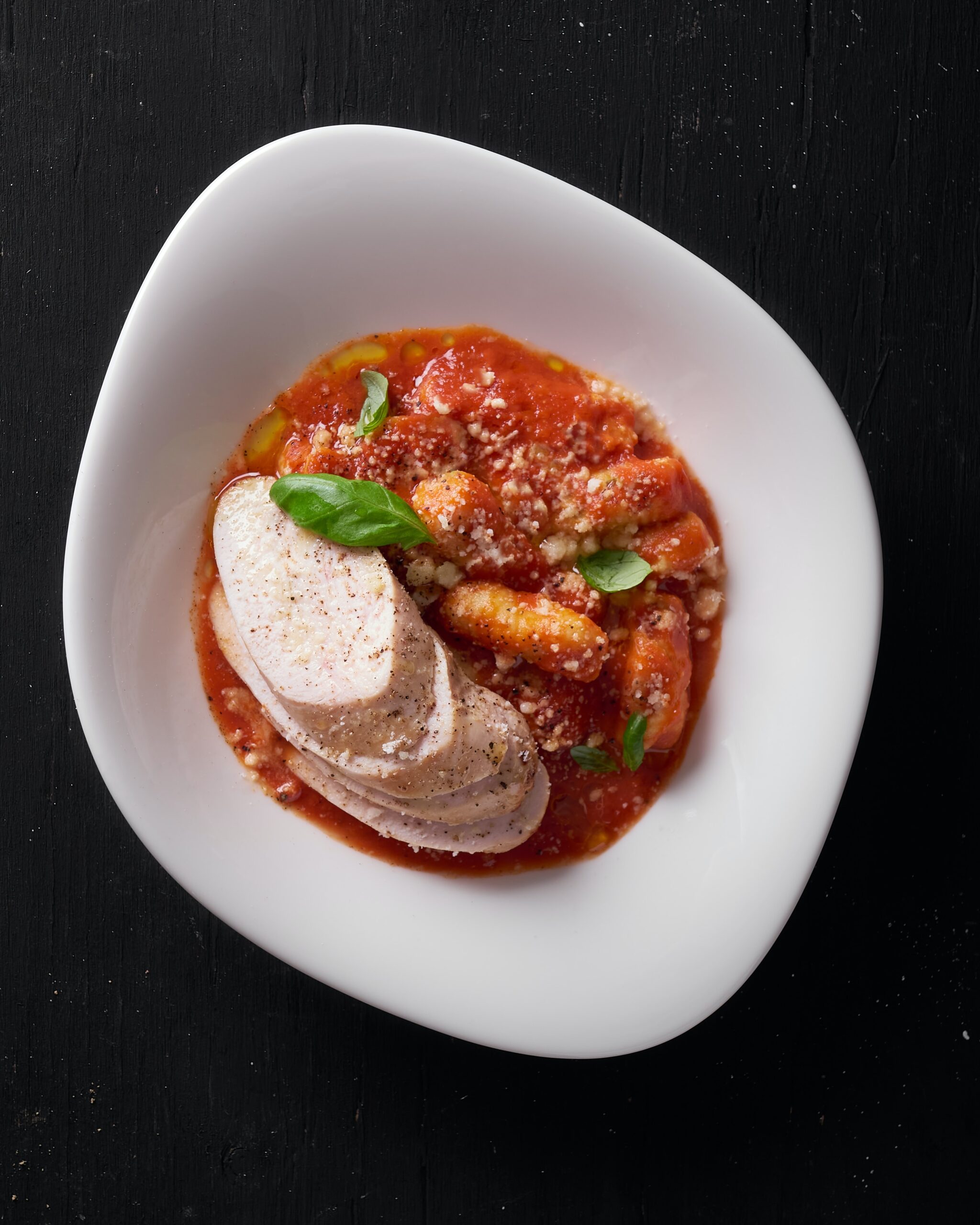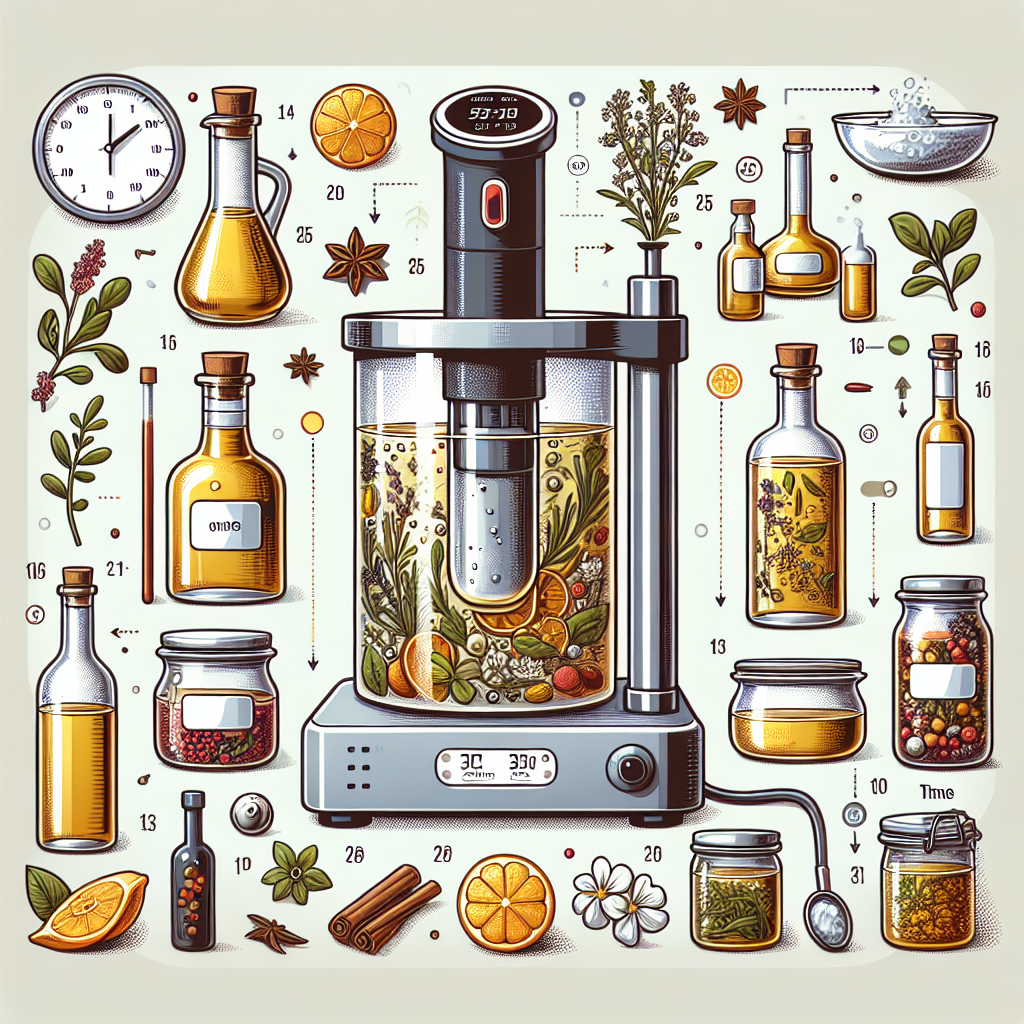
Imagine being able to effortlessly create your own infused oils and spirits from the comfort of your own kitchen. With the rising popularity of sous vide cooking, you may be wondering if this technique can be utilized for such a task. Well, you’re in luck! In this article, we will explore the exciting world of sous vide and uncover whether it is suitable for making infusions like infused oils or spirits. Prepare to embark on a flavorful journey where precision meets creativity.

What is sous vide?
Definition of sous vide cooking
Sous vide cooking is a technique that involves cooking food in a controlled temperature water bath. The term “sous vide” is a French phrase that translates to “under vacuum,” which refers to the vacuum-sealed bags commonly used in this method. The process requires precise temperature control and allows food to cook evenly and retain its moisture, resulting in tender and flavorful dishes.
Benefits of sous vide cooking
There are several benefits to using the sous vide cooking method. Firstly, it ensures consistent and precise cooking temperatures, eliminating the risk of overcooking or undercooking. The gentle and even heat distribution in a water bath helps retain the natural flavors and juices of the ingredients, resulting in enhanced taste and texture. Sous vide cooking also allows for precise control over the desired doneness of meat and vegetables. Additionally, this method can save time as it requires minimal hands-on attention, freeing you up to focus on other tasks in the kitchen.
Infusing oils and spirits
What are infused oils?
Infused oils are oils that have been flavored by infusing them with various herbs, spices, or fruits. The infusion process involves extracting the flavors from these ingredients and incorporating them into the oil. Infused oils can be used to add depth and complexity to dishes, whether used in cooking, dressing salads, or as a finishing touch.
What are infused spirits?
Infused spirits are alcoholic beverages that have been flavored by infusing them with different herbs, spices, or fruits. The infusion process allows the alcohol to extract the flavors and aromas from the chosen ingredients, resulting in unique and personalized spirits. Infused spirits can be enjoyed on their own or used as a base for cocktails, adding complexity and depth to the flavor profile.
Traditional methods of infusing oils and spirits
Traditionally, infusing oils and spirits would involve steeping the chosen ingredients in the liquid for an extended period, often weeks or even months. This process relied on time for the flavors to be extracted and infused. However, traditional methods often had limited control over the temperature, leading to inconsistent results and potential risks of spoilage.
Drawbacks of traditional infusing methods
The traditional methods of infusing oils and spirits have some drawbacks. First, the lack of precise temperature control could impact the quality and safety of the final product. Additionally, the lengthy infusion times could be impractical when you’re looking for a quick flavor infusion. Traditional methods also require constant monitoring, stirring, and filtering, which can be time-consuming and labor-intensive. This is where sous vide comes in as a game-changer for infusion enthusiasts.
The sous vide method
How sous vide works
In sous vide cooking, the desired ingredients, such as herbs, spices, fruits, or oils, are placed in a vacuum-sealed bag or airtight container. The bag or container is then submerged in a temperature-controlled water bath. The sous vide machine, also known as an immersion circulator, heats the water to a precise temperature and maintains it throughout the cooking process. The even heat distribution ensures that the ingredients are infused thoroughly and evenly.
Advantages of using sous vide for infusion
Sous vide offers several advantages when it comes to infusing oils and spirits. Firstly, the precise temperature control ensures that the ingredients are infused at the optimal temperature for extracting their flavors. This results in a more intense and flavorful infusion compared to traditional methods. Sous vide also significantly reduces the infusion time, allowing for quick experimentation with different ingredients and flavors. Furthermore, the sealed environment of sous vide minimizes the risk of spoilage and contamination, ensuring a safe and shelf-stable final product.
Choosing the right ingredients
Selecting oils for infusion
When it comes to selecting oils for infusion, it’s important to choose ones that have a neutral flavor and a high smoke point. This allows the flavors of the infused ingredients to shine without being overpowered by the oil’s inherent taste. Popular choices for oil infusion include extra virgin olive oil, grapeseed oil, and avocado oil.
Choosing herbs, spices, or fruits for infusing oils
The choice of herbs, spices, or fruits for infusing oils is a matter of personal preference and experimentation. Fresh herbs like rosemary, thyme, or basil can add aromatic and earthy notes to the oil. Spices such as cinnamon, cloves, or cardamom can contribute warm and spicy flavors. Fruits like citrus zest, chili peppers, or berries can infuse oils with vibrant and tangy undertones. Consider the flavor profiles you want to achieve and match the ingredients accordingly.
Pairing spirits and ingredients for infusion
When choosing spirits and ingredients for infusion, it’s essential to consider their compatibilities. For example, gin pairs well with botanicals like juniper berries, citrus peel, or lavender. Bourbon can be infused with vanilla beans or smoked wood chips for a rich and smoky flavor. Vodka can be infused with fruits such as berries, pineapple, or cucumber for a refreshing twist. Experimentation is key to discovering unique flavor combinations that suit your taste preferences.

Preparing the ingredients
Washing and drying herbs, spices, or fruits
Properly washing and drying herbs, spices, or fruits is crucial before infusing them. Rinse the ingredients under cold water to remove any dirt or impurities. Pat them dry with a clean kitchen towel or paper towels to remove excess moisture. This step ensures that your infusion remains clean and free from potential contaminants.
Maceration process for infusing spirits
Maceration is a method commonly used to prepare fruits for spirit infusion. Start by washing and cutting the fruits into small pieces. Place the fruit in a glass jar or container and cover it with the chosen spirit. Seal the container tightly and allow it to sit at room temperature, periodically shaking it to release the flavors. The fruit will gradually release its essence into the spirit, resulting in a flavorful infusion.
Toasting herbs or spices for added flavor
Toasting herbs or spices before infusing them can enhance their flavors and aromas. Heat a dry skillet over medium heat and add the herbs or spices. Toast them for a few minutes, stirring frequently, until they become fragrant. Be cautious not to burn them. Toasting can intensify the flavors, adding complexity to your infusion. Let the toasted ingredients cool before placing them in the vacuum-sealed bag or container.
Packaging for sous vide infusion
Using vacuum-sealed bags for infusion
Vacuum-sealed bags are commonly used for sous vide infusion due to their ability to securely hold the ingredients and prevent any leakage. Place the chosen herbs, spices, fruits, or oils in a vacuum-sealed bag, ensuring they are evenly distributed. Remove as much air as possible from the bag using a vacuum sealer. The absence of air promotes better infusion and minimizes the risk of spoilage.
Selecting appropriate bags or containers
If you don’t have access to a vacuum sealer, alternative airtight bags or containers can be used for sous vide infusion. Mason jars or ziplock bags with airtight seals can work effectively. Just make sure to remove as much air as possible from these containers to achieve the best infusion results. Ensure that the bags or containers are made from food-safe materials and can withstand the sous vide cooking temperatures.
Eliminating air for better infusion
Air can hinder the infusion process and compromise the quality of your infusion. Whether using vacuum-sealed bags or alternative containers, it’s crucial to remove as much air as possible to maximize the infusion results. The absence of air allows for better contact between the ingredients and the liquid, ensuring a more thorough and flavorful infusion.

Temperature and time considerations
Determining optimal temperature for infusion
The optimal temperature for infusion varies depending on the ingredients and the desired flavors. As a general guideline, aim for temperatures between 120°F (49°C) and 160°F (71°C) for oil infusions and between 130°F (54°C) and 160°F (71°C) for spirit infusions. However, it’s important to note that delicate ingredients may require lower temperatures to avoid any degradation of flavors or textures. Experimentation and personal taste preferences will ultimately determine the ideal temperature for your infusions.
Factors affecting infusion time
Several factors can influence the infusion time of oils and spirits. The type and intensity of the ingredients, such as the freshness and size of herbs, spices, or fruits, can impact the time required for infusion. The temperature and duration of the sous vide process also play a role in determining the flavor intensity. Generally, infusion times can range from 30 minutes to several hours, depending on the desired flavor profile and intensity.
Calculating infusion time based on ingredient and desired flavor intensity
To calculate the infusion time, consider the desired flavor intensity and the ingredient’s characteristics. For a subtle infusion, a shorter time may be sufficient, while a more intense flavor may require a longer infusion period. It’s recommended to start with shorter infusion times and taste the infusion periodically until you achieve the desired flavor. Note the time it took to reach the desired intensity for future reference and to replicate the results.
Sous vide equipment setup
Using an immersion circulator for infusion
An immersion circulator is a key component of the sous vide method, including infusion. It heats and circulates the water, maintaining a precise temperature throughout the cooking process. To use an immersion circulator for infusion, simply attach it to a suitable container filled with water. Set the desired temperature according to the infusion you’re attempting, and the immersion circulator will ensure consistent heat distribution for optimal infusion results.
Alternative methods of sous vide infusion
If you don’t have access to an immersion circulator, alternative methods can still achieve sous vide-like results. One option is to use a stovetop-safe pot filled with water and a thermometer to monitor and maintain the desired temperature. Another alternative is to use an oven set to a low and precise temperature, with a pan of water placed inside to create a humid cooking environment. Both methods require careful monitoring to ensure the temperature remains constant throughout the infusion process.

Infusing oils using sous vide
Step-by-step process for infusing oils
- Select your desired oil and ingredients for infusion, ensuring they are fresh and of good quality.
- Wash and dry the chosen herbs, spices, or fruits.
- Place the herbs, spices, or fruits in a vacuum-sealed bag or airtight container.
- Add the oil to the bag or container, ensuring the ingredients are evenly distributed.
- Remove as much air as possible from the bag or container using a vacuum sealer or alternative method.
- Set the water bath to the desired temperature for oil infusion (typically between 120°F-160°F).
- Submerge the sealed bag or container in the water bath and allow it to infuse for the desired duration.
- Once the infusion time is complete, remove the bag or container from the water bath.
- Strain the infused oil to remove any solid particles or residue.
- Transfer the infused oil to a clean, airtight container, labeling it with the infusion date and ingredients.
- Store the infused oil in a cool, dark place to maintain its quality and flavors.
Tips for achieving desired flavors in infused oils
- Experiment with different combinations of herbs, spices, and fruits to create unique flavor profiles.
- Adjust the infusion time and temperature according to the intensity of flavors you desire.
- Taste the infused oil periodically to monitor the flavor progression during the infusion process.
- Use high-quality oils to achieve the best results and enhance the flavor extraction.
- Store infused oils in dark, airtight containers to protect them from light and air.
- Properly label the infused oils with the infusion date and ingredients used for easy reference.
Safety precautions and storage guidelines
When infusing oils using sous vide, it’s essential to take safety precautions to minimize the risk of spoilage or bacterial growth. Use fresh and clean ingredients, ensuring that the preparation surfaces and equipment are well-sanitized. It’s crucial to maintain proper temperature control throughout the infusion process to prevent the growth of harmful bacteria. Store the infused oils in a cool, dark place to preserve their flavors and extend their shelf life. Regularly check for any signs of spoilage, such as off odors or mold growth, and discard the oil if any concerns arise.
Conclusion
The sous vide method offers a versatile and efficient approach to infusing oils and spirits. The precise temperature control and even heat distribution ensure thorough flavor extraction and optimal infusion results. By choosing the right ingredients, preparing them properly, and packaging them appropriately, you can achieve unique and flavorful infusions. The sous vide technique allows for experimentation with various combinations of herbs, spices, fruits, and spirits, unlocking a world of new culinary possibilities. So, embrace the power of sous vide and unleash your creativity in the realm of infusions, and let your taste buds embark on exciting new flavor adventures.



